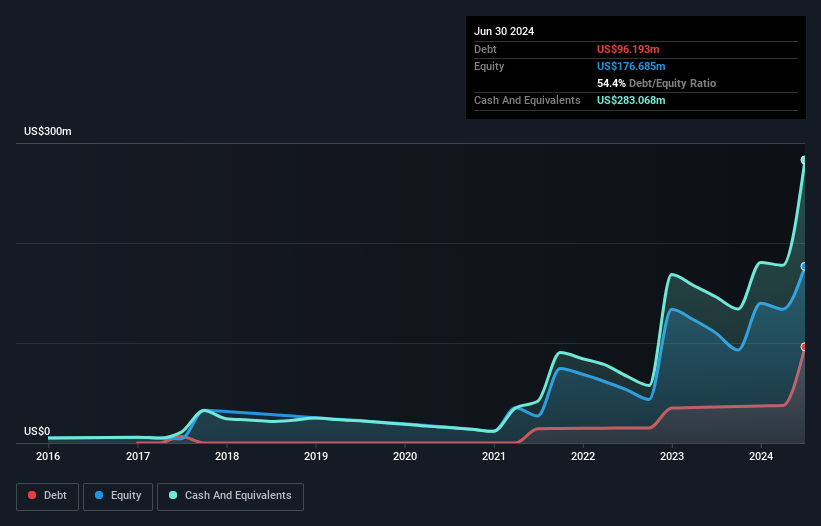Is Celcuity (NASDAQ:CELC) Using Too Much Debt?
Warren Buffett famously said, 'Volatility is far from synonymous with risk.' So it might be obvious that you need to consider debt, when you think about how risky any given stock is, because too much debt can sink a company. We note that Celcuity Inc. (NASDAQ:CELC) does have debt on its balance sheet. But should shareholders be worried about its use of debt?
What Risk Does Debt Bring?
Debt is a tool to help businesses grow, but if a business is incapable of paying off its lenders, then it exists at their mercy. Ultimately, if the company can't fulfill its legal obligations to repay debt, shareholders could walk away with nothing. However, a more usual (but still expensive) situation is where a company must dilute shareholders at a cheap share price simply to get debt under control. By replacing dilution, though, debt can be an extremely good tool for businesses that need capital to invest in growth at high rates of return. When we examine debt levels, we first consider both cash and debt levels, together.
Check out our latest analysis for Celcuity
What Is Celcuity's Debt?
As you can see below, at the end of June 2024, Celcuity had US$96.2m of debt, up from US$36.0m a year ago. Click the image for more detail. But it also has US$283.1m in cash to offset that, meaning it has US$186.9m net cash.

How Healthy Is Celcuity's Balance Sheet?
According to the last reported balance sheet, Celcuity had liabilities of US$19.5m due within 12 months, and liabilities of US$96.3m due beyond 12 months. Offsetting these obligations, it had cash of US$283.1m as well as receivables valued at US$38.3k due within 12 months. So it can boast US$167.2m more liquid assets than total liabilities.
This surplus suggests that Celcuity is using debt in a way that is appears to be both safe and conservative. Due to its strong net asset position, it is not likely to face issues with its lenders. Simply put, the fact that Celcuity has more cash than debt is arguably a good indication that it can manage its debt safely. The balance sheet is clearly the area to focus on when you are analysing debt. But it is future earnings, more than anything, that will determine Celcuity's ability to maintain a healthy balance sheet going forward. So if you're focused on the future you can check out this free report showing analyst profit forecasts.
Given its lack of meaningful operating revenue, Celcuity shareholders no doubt hope it can fund itself until it has a profitable product.
So How Risky Is Celcuity?
By their very nature companies that are losing money are more risky than those with a long history of profitability. And the fact is that over the last twelve months Celcuity lost money at the earnings before interest and tax (EBIT) line. And over the same period it saw negative free cash outflow of US$67m and booked a US$83m accounting loss. While this does make the company a bit risky, it's important to remember it has net cash of US$186.9m. That means it could keep spending at its current rate for more than two years. Even though its balance sheet seems sufficiently liquid, debt always makes us a little nervous if a company doesn't produce free cash flow regularly. There's no doubt that we learn most about debt from the balance sheet. However, not all investment risk resides within the balance sheet - far from it. These risks can be hard to spot. Every company has them, and we've spotted 3 warning signs for Celcuity (of which 2 are significant!) you should know about.
At the end of the day, it's often better to focus on companies that are free from net debt. You can access our special list of such companies (all with a track record of profit growth). It's free.
Have feedback on this article? Concerned about the content? Get in touch with us directly. Alternatively, email editorial-team (at) simplywallst.com.
This article by Simply Wall St is general in nature. We provide commentary based on historical data and analyst forecasts only using an unbiased methodology and our articles are not intended to be financial advice. It does not constitute a recommendation to buy or sell any stock, and does not take account of your objectives, or your financial situation. We aim to bring you long-term focused analysis driven by fundamental data. Note that our analysis may not factor in the latest price-sensitive company announcements or qualitative material. Simply Wall St has no position in any stocks mentioned.
 Index Options
Index Options CME Group
CME Group Nasdaq
Nasdaq Cboe
Cboe TradingView
TradingView Wall Street Journal
Wall Street Journal